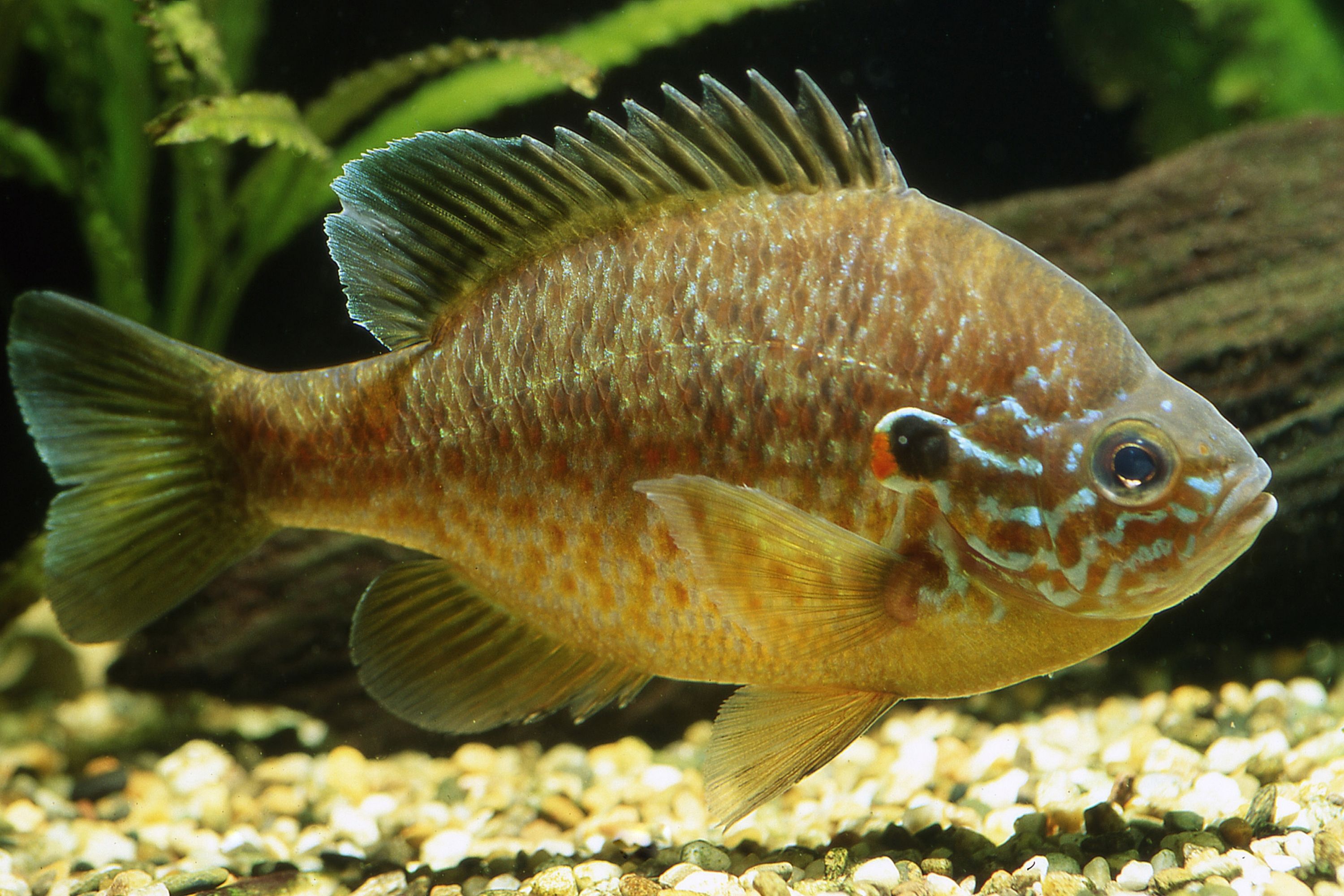Warmouth
(Lepomis gulosus)

Description
The warmouth (Lepomis gulosus), is a freshwater fish of the sunfish family (Centrarchidae) that is found throughout the eastern United States. Other local names include molly, redeye, goggle-eye, red-eyed bream, and strawberry perch. The adult warmouth is dark, with a mottled brown coloration. Its belly is generally golden, and the male has a bright-orange spot at the base of the dorsal fin. Three to five reddish-brown streaks radiate from the eyes, and the gill flaps are often red. It has three spines in the anal fin, 10 spines in the dorsal fin, and small teeth are present on the tongue. These fish range in size from 4 to 10 inches (10.2 to 25 cm), but can grow to over 12 inches (31 cm) in length, and weigh up to 2.25 pounds (1 kg). The warmouth is occasionally confused with the rock bass or green sunfish, both of which share its relatively large mouth and heavy body. However, the green sunfish generally has a greenish-blue variegated pattern on its gill flaps, a black spot near the base of the dorsal fin, and its fins are bordered in yellowish-white. The rock bass has 5-7 spines in its anal fin as opposed to the three in the warmouth. The warmouth tends to be a bit larger in size than either of the other two species. Warmouth are found throughout much of the south in the Mississippi River drainage, from the Gulf and Atlantic coasts and northward to the Chesapeake Bay, and westward throughout Texas to the Rio Grande, and northward into the Great Lakes basin area. The warmouth is a highly aggressive and hardy fish, and they can live in ponds, lakes, rivers, and backwater streams and can often survive in streams with low oxygen levels where other species of sunfish cannot. The species exists with breeding populations in southern portions of Canada, and likely has existed there for many years prior to being detected. The primary diet of the warmouth consists of insects, crayfish, and other fish. They are sight feeders, and can survive in polluted, low-oxygenated waters where other sunfish cannot, like rock bass. The largest factor affecting warmouth density and biomass in Florida's lakes is the availability of aquatic macrophytes, which allows the fish to ambush prey and use as areas to spawn. The primary diet of young warmouth is microcrustaceans and aquatic insect larvae, whereas larger specimens tend to mainly consume crayfish, freshwater shrimp, isopods, and other small fish.
Taxonomic tree:







